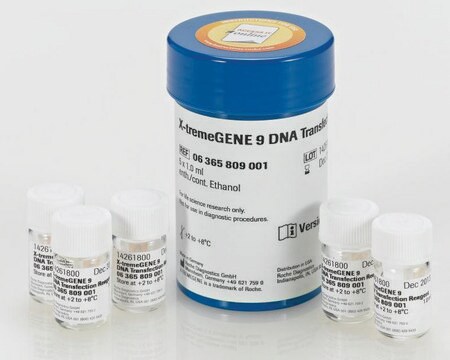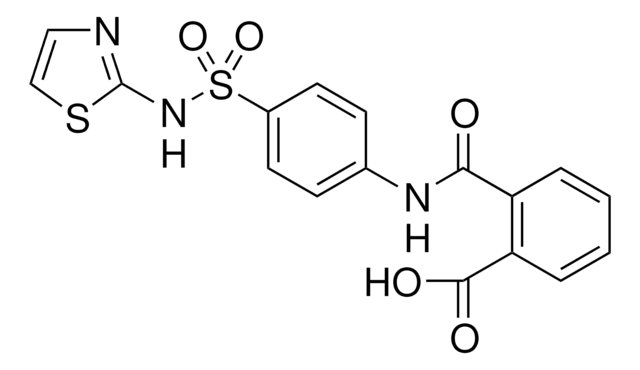Kluczowe dokumenty
XTGHP-RO
Roche
X-tremeGENE™ HP DNA Transfection Reagent
High-performance polymer reagent for transfecting many cell lines
About This Item
Polecane produkty
klasa czystości
Molecular Biology
for molecular biology
Poziom jakości
Formularz
liquid (aqueous solution)
zastosowanie
mL (suitable for 165 transfections)
opakowanie
pkg of 0.4 mL (06366244001)
pkg of 1.0 mL (06366236001)
pkg of 5 × 1 mL (06366546001)
producent / nazwa handlowa
Roche
metody
transfection: suitable
temp. przechowywania
−20°C
Powiązane kategorie
Opis ogólny
Cechy i korzyści
- Benefit from an easy-to-use non-liposomal reagent that is free of animal-derived components, stable at room temperature, filtered through 0.2 μm pore size membrane, and active in serum-containing medium.
- Achieve new levels of transfection efficiency in primary cells and tumor cell lines that are not transfected well by other reagents.
- Generate physiologically relevant data using a reagent with low cytotoxic effects.
- Increase experimental throughput and enable target evaluation using a simple and consistent protocol.
Jakość
Postać fizyczna
Inne uwagi
Informacje prawne
produkt powiązany
Hasło ostrzegawcze
Danger
Zwroty wskazujące rodzaj zagrożenia
Zwroty wskazujące środki ostrożności
Klasyfikacja zagrożeń
Eye Irrit. 2 - Flam. Liq. 2
Kod klasy składowania
3 - Flammable liquids
Klasa zagrożenia wodnego (WGK)
WGK 1
Temperatura zapłonu (°F)
334.4 °F
Temperatura zapłonu (°C)
168 °C
Wybierz jedną z najnowszych wersji:
Masz już ten produkt?
Dokumenty związane z niedawno zakupionymi produktami zostały zamieszczone w Bibliotece dokumentów.
Klienci oglądali również te produkty
Produkty
Automation is used for many applications to reduce variation caused by manual handling and to obtain reproducible results in high-throughput assays. High-throughput applications, such as knockdown studies or target screenings, often include cell transfection.
Small inhibitory RNAs (siRNAs) have become the focus of interest in many laboratories. For the first time, these molecules offer an easy way to knock down the expression of selected genes in mammalian cells without having to resort to classical gene knockout techniques.
Transfekcja wprowadza materiał genetyczny do komórek, wspomagając badania nad ekspresją genów i biologią komórek.
Transfection is the introduction of DNA, RNA, or proteins into eukaryotic cells and is used in research to study and modulate gene expression. Thus, transfection techniques and protocols serve as an analytical tool that facilitates the characterization of genetic functions, protein synthesis, cell growth and development.
Protokoły
Lentiviruses represent a powerful tool in research applications to transduce a wide range of cell types.
Cell preparation for transfection Plate cells approx. 24 hours before transfection making sure cells are at optimal concentration (70 – 90 % confluency).
Transient co-transfection of plasmids is a method that is commonly employed for cellular protein-protein interaction studies, transcription factor studies, and gene knockdown studies using shRNA encoding plasmids.
Protokoły transfekcji popularnych linii komórkowych przy użyciu odczynników do transfekcji X-tremeGENE™
Nasz zespół naukowców ma doświadczenie we wszystkich obszarach badań, w tym w naukach przyrodniczych, materiałoznawstwie, syntezie chemicznej, chromatografii, analityce i wielu innych dziedzinach.
Skontaktuj się z zespołem ds. pomocy technicznej













